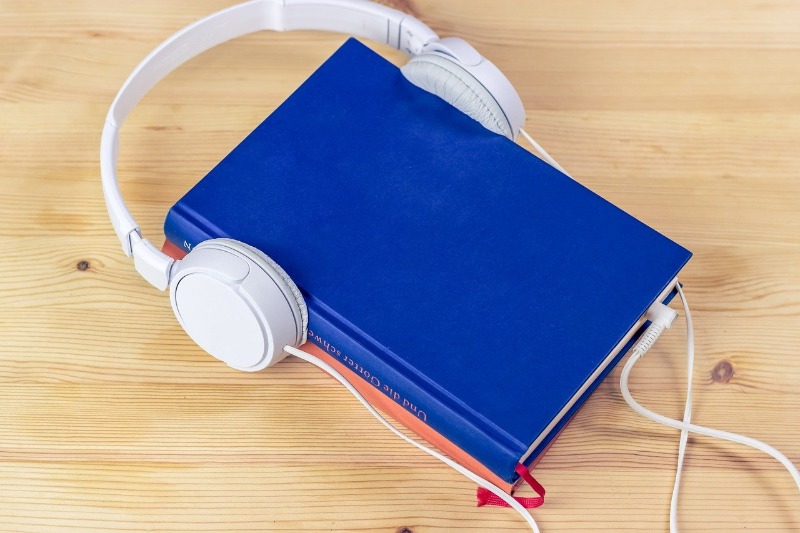Speed Reading v Skimming, Normal Slow Reading and Audiobooks
Some frequently asked questions include: What’s the difference between Speed Reading, Skimming and normal reading? Which is best and how do you know? Are audiobooks better than printed text?
Horses for Courses
There is no single right way to read or best medium. You choose the technique and the material according to whether it’s for business, study or pleasure; the time available; level of detail required; and the difficulty of the text. You may use a completely different technique to casually read a newspaper than you would to study a complex science textbook. Let me explain some different approaches to reading and their relative merits.
The problem which unskilled readers face is that they only have one way of reading. This was all they were taught at school. American psychologist, Abraham Maslow famously said, “If the only tool you have is a hammer, you tend to see every problem as a nail.” This is also known as the ‘law of instrument’ and refers to the necessity to approach different situations using various methods.

Skimming and Scanning
Skimming and scanning are very useful techniques when you need to access information very quickly but don’t need high levels of comprehension.
Swallows undertake an amazing 6000 mile migration between the UK and South Africa twice a year. They can travel an average of 200 miles a day, flying almost non-stop. They feed mostly on insects in flight and skim over ponds and streams to pick up droplets of water in their beaks to drink. This is a nice analogy for the skimming form of reading where you move your eyes over the text, dipping in here and there to pick up phrases, keywords and headings. Dr Nila Banton Smith, of The Reading Institute of New York University explains:
The swallow’s mode of skimming for food and water may be linked to the method used by skilled readers who skim over pages of print, gathering what they want as they ‘fly’ along. With instruction on practice a reader can become extremely adept in ‘catching’ what he desires from reading while ‘on the wing’.

It is important to note that skimming provides you with only the gist of a text. You get a rough appreciation of meaning but without the level of detail which Speed Reading can give you. On the plus side, skimming can be done very fast. A useful application of skimming is surveying a book before reading it in detail. This has two main benefits. Firstly, if you have an overview of a text it is easier to make sense of the details as you read, putting them into a wider context. Secondly, after having skimmed you may decide either that a book isn’t what you expected and therefore doesn’t need to be read, saving yourself otherwise wasted time. More usually, you’ll be able to identify parts of a book which should be read in detail whilst other sections can be safely omitted. The ability to be highly selective in your reading is a very important skill when faced with too much information and not enough time.
Scanning is a similar process to skimming but with the difference that the aim is to look for something specific rather than the general overview. We always formulate a question or decide what information is required before scanning a text.
Scanning can be thought of like using a metal detector. A detectorist moves the apparatus slowly over the ground and it will beep as soon as it discovers the presence of metal. Of course, when treasure hunting, it is more likely to be successful if you are searching somewhere where finds have already been made. Better to find a Viking hoard of gold coins in a farmer’s field than an old tin can on the site of a former rubbish dump. Likewise, when scanning for information in a text it is important to make sure that the answer to your question is likely to be there. A quick flick through the contents page and index, if present, can provide clues on where to look.
There is a circuit in the brainstem called the Reticular Activating System (RAS). Its purpose is to filter incoming sensory stimuli and redirect them to the cerebral cortex. Simplistically it can be thought of like a gatekeeper or nightclub bouncer, excluding unnecessary information so the important stuff gets through. Imagine that you are Interested in buying a new car. You’ve decided on a particular make and model. In the coming weeks before purchasing the car you’ll probably notice that it seems to be much more commonly seen on the road. Have lots of people had the same idea? Actually, it’s no more common. What has changed is its significance to you. Your RAS alerts you every time you see that particular car. This is great news for reading. If you prime your RAS with questions it will automatically alert you when your eyes spot what you are looking for. You can move them over the text very quickly without needing to read in-depth. When you come across the answer to the question or relevant information it’s almost like it is emboldened or highlighted in the document.
A slightly more sinister consequence of the RAS is its effect on apparently confirming a false belief. If you think the other checkout at the supermarket always moves faster than yours then the RAS will make you notice every time this happens. When you sail right through you don’t think about it. If you believe you have a bad memory then your RAS will draw your attention to all your failings and ignore all the things you remember perfectly. Take care of your outlook on life. It is always better to be optimistic but realistic and believe in yourself. Don’t let a belief you’re a slow reader hold you back.
Range Reading
Mathematically, speed is defined as distance divided by time. We talk about miles per hour or metres per second. Speed does not necessarily mean fast. Likewise, Speed Reading, in words per minute, does not have to be fast. Knowing the techniques of Speed Reading gives you a choice of how fast you decide to read. If you’re driving a car, you don’t spend the whole time in second gear at 10mph. You step up the gears depending on what type of road you’re driving on. 70mph in fifth gear on the motorway. 30mph on the single-track roads where I live and where you’re likely to meet a tractor coming the other way.

A more accurate term would be Range Reading. You have a varied range of different speeds you can choose from. For example, if you are reading a book in bed, you will use the opposite of the techniques used to speed up. You will re-read paragraphs and sometimes whole pages, slowly lingering over individual words. You will allow your mind to wander. It could take months to finish a book but the aim is to wind down and drift off to sleep. It is possible and enjoyable to read novels and poetry quickly. However, you may want to savour the language and explore imagery in Great Literature. In this case, once again, you may choose to read slowly. If you have a management report, textbook of business Journal you probably want to spend as little time as possible gleaning the necessary information and moving on. Use all the techniques at your disposal to read rapidly.

Usain Bolt can run 100 metres in 9.58 seconds. Of course, when not on the racetrack, I’m sure he walks at normal pace. In the gym he focuses on building strength and power. With your reading you need to follow his example and work on your technique so you can have the ability to sprint through documents when you choose.
Normal versus Natural
Reading very fast is certainly not normal. The average reading speed is around 200-250 wpm and even slower when studying. Fewer than one in ten-thousand people read that over 1,100 words a minute. Just because it is very unusual doesn’t make it unnatural. Most people can think far faster than they read. Why keep your brain hanging around waiting for information which it is capable of processing much quicker? Starved of information and stimulation, the brain wanders off into a daydream in search of something more interesting. The longer the gaps between pieces of information, the further away the brain drifts from the author’s intent. It is little wonder then that the comprehension of average readers is relatively poor at around 60-80%. The natural way the brain likes to efficiently take in information is in meaningful chunks, received quickly at near the speed of thought. These can be easily grouped together to make sense. Speed Reading therefore is absolutely natural - more so than so-called normal reading speed.
Audio Books for Multi-Tasking
There’s something comforting about listening to somebody else reading to you. I guess it stems back to bedtime stories as children. I remember when I was very little having a favourite story, “Trevor Bill - the Bad Tempered Road Mender” by Ruth Craft.

When you’re ‘reading’ for pleasure, and you like a particular narrator then an audiobook can be a good solution. If you’re deliberately hearing the words in your head as you read (subvocalizing) then, of course, you can imagine the accent and intonation of your favourite narrator when reading printed material too. You can have fun with combinations which haven’t been recorded.
If you’re pressed for time, listening to someone speak is significantly slower than reading printed text. One advantage of audiobooks over printed ones is that you can listen whilst doing something else. For example, whilst exercising or walking you can listen on headphones. Whilst driving, an audiobook is more productive than listening to the radio, as long as you won’t be distracted. You can even listen whilst cooking.
Once you understand the relative advantages and disadvantages of the various types of reading you can decide which is best for your particular situation. There is no wrong or right technique – just well or poorly matched ones.

